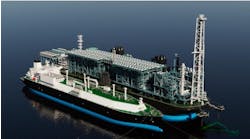P.3 ~ Global deepwater developments: real supply additions or just fighting decline?
View Article as Single page
Rest of world
Brazil, the US GoM, and West Africa are in a league of their own when it comes to deepwater developments this decade. However, there are interesting developments going on in other corners of the world as well.
The fifth largest market by capex investments is Australia. Here most of the investments are related to additional phases of producing or under development North West Shelf projects like Gorgon and Pluto. There are also some possible stand-alone developments like Scarborough and Greater Laverda. However, developments are likely to move slower going forward given that several of the larger operators have said that they may postpone sanctioning on some projects, due to the lack of capacity and cost inflation in the industry.
Indonesia is potentially the most interesting deepwater market in Asia toward 2020. Projects like Chevron's Indonesia Deepwater Development Project (consisting of, among other, the Gendalo and Gehem discoveries) and INPEX's Abadi FLNG development may give the market a real boost. However, regulatory obstacles pose difficulties in the Indonesian market and progress moves slowly. The industry hopes that the newly elected president Joko "Jokowi" Widodo will deliver on his promises and boost the oil and gas sector by providing enhanced fiscal terms for mature fields and exploration, and removing red-tape.
Several of the other countries have potential projects but there are two countries/regions that merit special attention. Firstly, by the end of this decade there might be burgeoning expenditure in East Africa toward developing deepwater gas discoveries off the coast of Mozambique and Tanzania. Secondly, the Bay du Nord discovery in Canada has contributed to establish Flemish Pass as a new oil play which might result in more discoveries in the years to come, both in Canada and in the similar geology on the northeastern African coast of Morocco and Western Sahara.
Future production trends
Obviously there are a lot of developments going on around the globe. Most of the large deepwater markets face challenges in some form whether it is local content requirements, constrained supplier chains, bureaucracy and red tape, or uncertain political and regulatory environments. However, challenges aside, when all the projects are summarized, the production outlook is very promising. The "global deepwater oil and gas production by life cycle" figure shows the production profile for all deepwater developments (deeper than 1,500 ft) by the fields' life cycle. By 2015, the production level is forecasted to surpass the old high of 7.2 MMboe/d and reach 7.9 MMboe/d. Even if no new deepwater fields are sanctioned (disregarding the green area), the production is still forecasted to increase toward 2019 and reach a level of 9.6 MMboe/d. By including likely sanctioned discoveries over the period, the production potential reaches 11.9 MMboe/d in 2020.
Overall, deepwater production has the potential to grow production by close to 80% by 2020, compared to the 2013 level. This is truly an achievement, and it is an increase few other sources of supply can expect to match. The development of deepwater resources will continue into the 2020s and as production and drilling technologies continue to improve, the recovery factors will increase, even as the waters become deeper and the distances from shore longer.
The author
Jon Fredrik Müller is a Senior Project Manager within the consulting department of Rystad Energy. His main area of expertise lies in the oil field service segments and particularly within offshore related services. He holds an MSc in Industrial Economics from NTNU, Norway, with specialization in mechanical engineering and finance, including a graduate exchange program at University of Calgary. He works in Rystad Energy's Oslo office.


